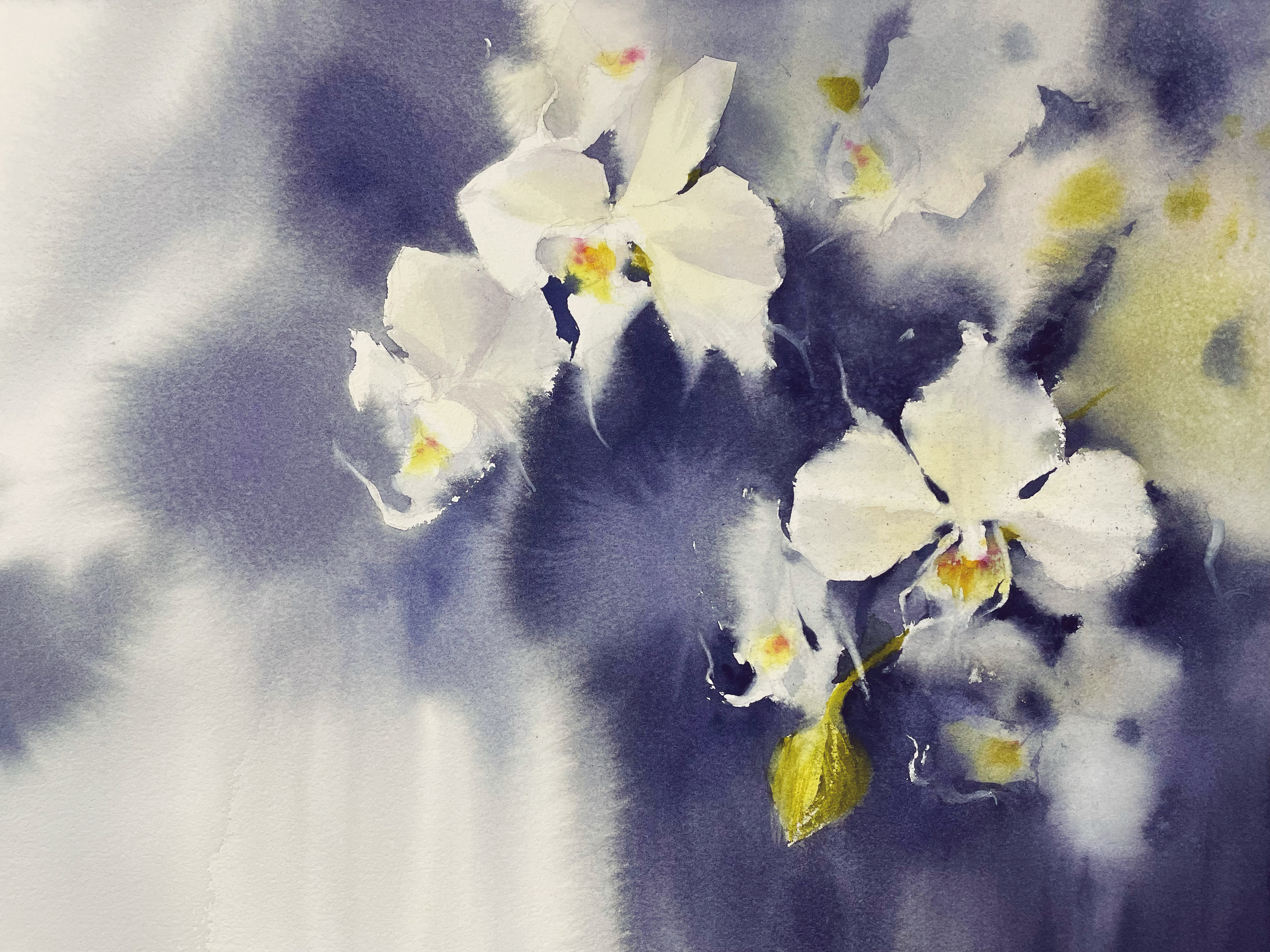Flowers are not only a decoration of life, but also a beautiful metaphor for it.
The artist seeks to capture a fleeting moment and sees beauty even in the wilting of a flower...
“Art is a constant attempt to compete with the beauty of flowers - and always unsuccessfully,” said the famous artist Marc Chagall.
And we will not compete in this course by trying to accurately copy each petal and list all the veins.
Our main task is to express feelings at the moment when we admire the blooming nature!
This course is dedicated to the subtle scents and airy images of flowers.
🔸 From abstract spots of watercolor on a sheet of wet cotton, we, as if by magic, will create the tenderness of the petals.
🔸 I will reveal all my secrets of working with blooming nature and tell you how to avoid lifelessness and fatigue in sketches.
Sunny peonies, fragrant roses, a light haze of lilacs and the grace of orchids are waiting for you in the lessons.
Do you want to see the magic of the birth of flowers on the surface of the paper?
Then let's get started!
Content
Lesson 1. Sunny peonies.
In this lesson you will learn how to more accurately convey the character and image of a flower so that it is recognizable. And also how to create volume and light in the image. In the a la prima technique (on one attempt) on a wet sheet, we will work “from the stain”. Let's write a quivering image and try to express the scent of peonies using the lightness and transparency of watercolor.
You will learn how to:
- start your work, previously analyzing the nature;
- pay attention to the preparatory stage;
- perform the drawing in a generalized way, without copying each petal;
- “see in spots” and abstract from the subject of the image;
-
highlight the main thing and control the attention of the viewer.
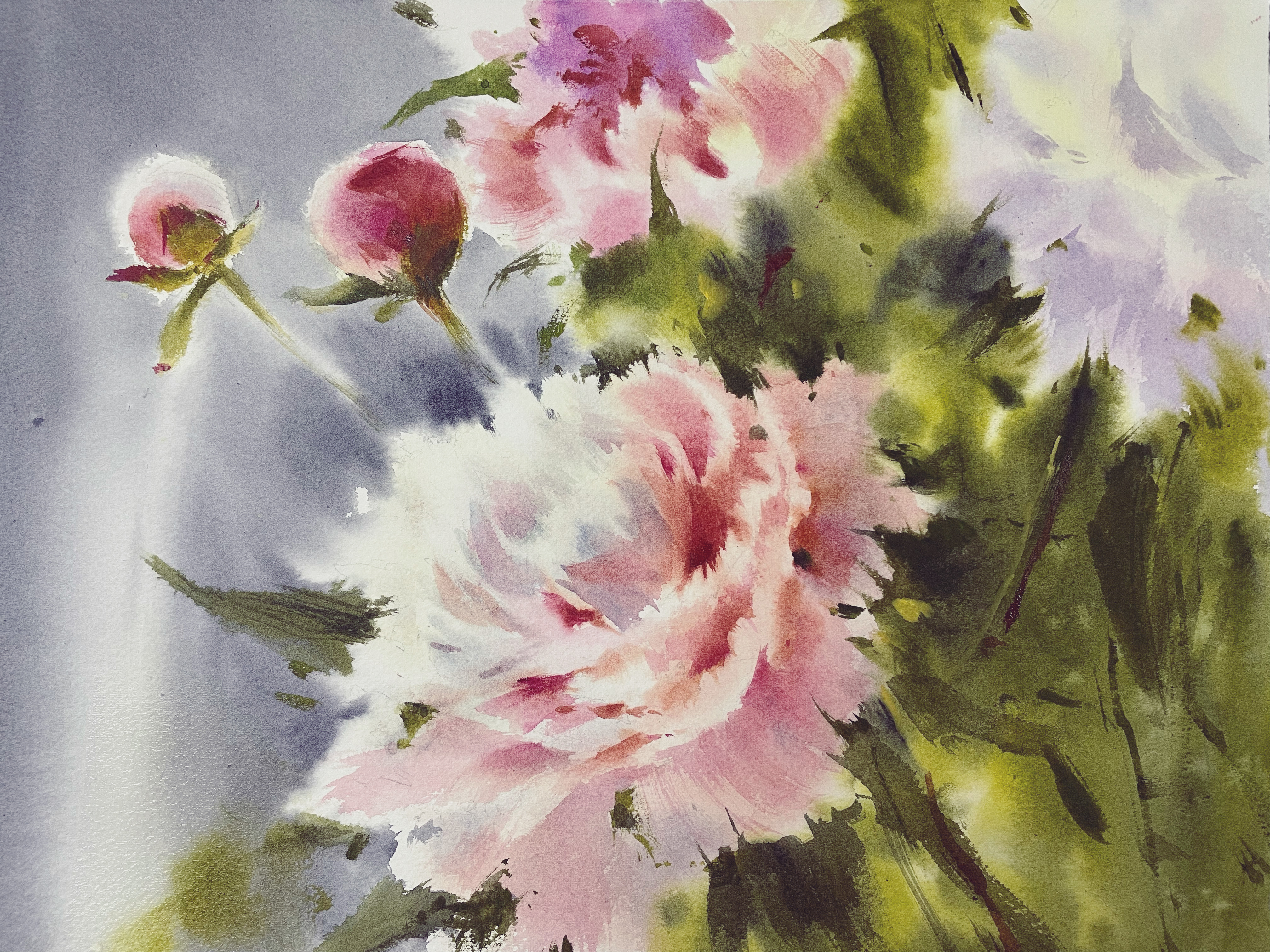
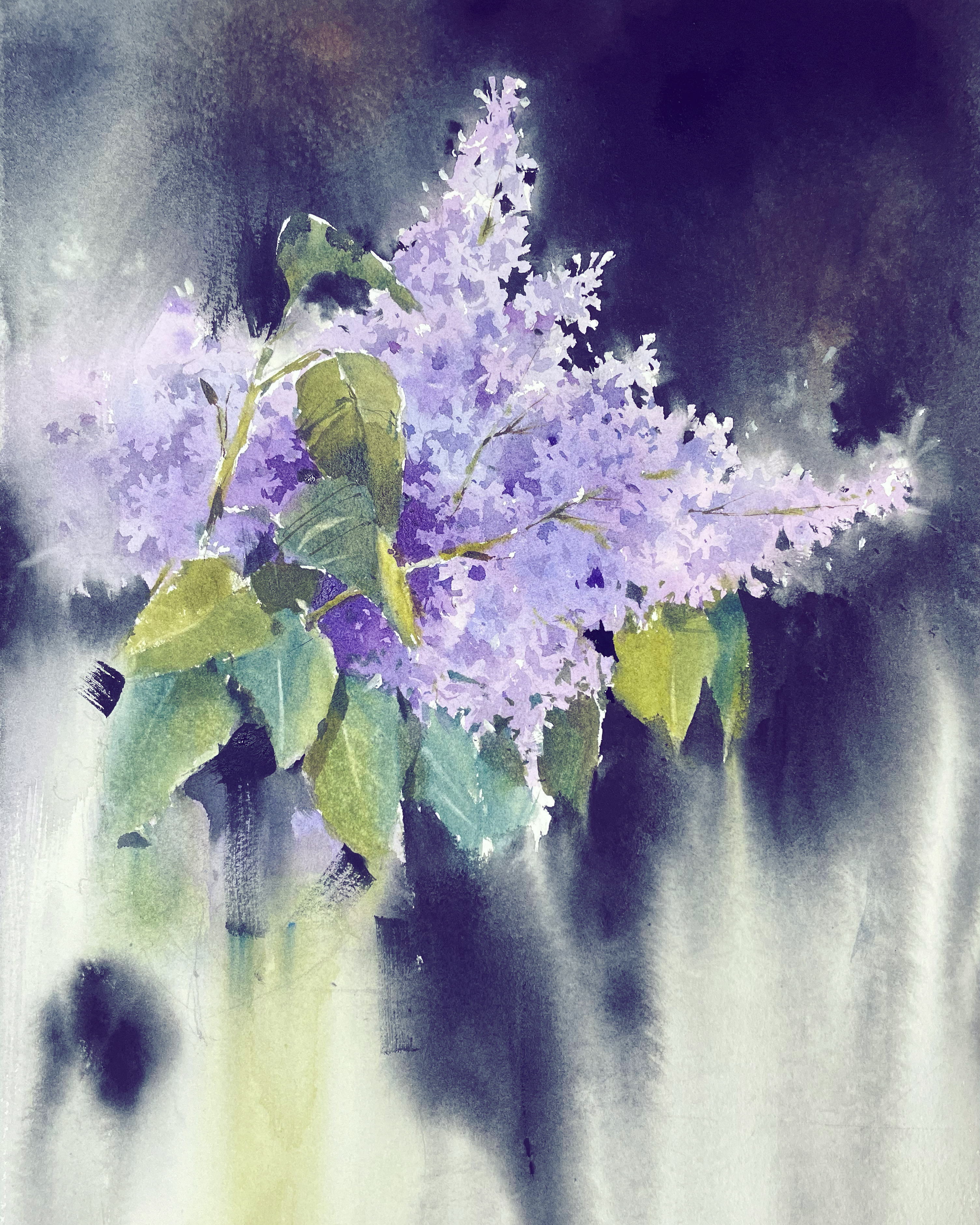
Lesson 2. Lilac branch.
In this lesson we will look at the works of famous artists depicting lilacs and explore their techniques with nature, which at first glance seems quite complicated. Let's learn how to combine and write a holistic image, create a picture of lilac boldly and quickly.
Let's work with a contrasting dark background, emphasizing the lightness, airiness and brightness of delicate petals.
You will learn how to:
- not be afraid of nature, consisting of small details;
- do not copy the reference;
- generalize and identify the main thing;
- work with negative space;
- feel free to use a dark background and flow of watercolor on the sheet.
Lesson 3. White orchids.
Having studied nature, we will convey the character of the flower on a sheet of paper. Using a contrasting background we will let the orchids glow. We will talk about the coloristic intricacies of creating white flowers and write an elegant image using the a la prima technique.
You will learn how to:
- pay attention to the study of nature;
- work out the tone in preliminary sketches;
- mix subtle shades for white petals;
-
leave mystery and
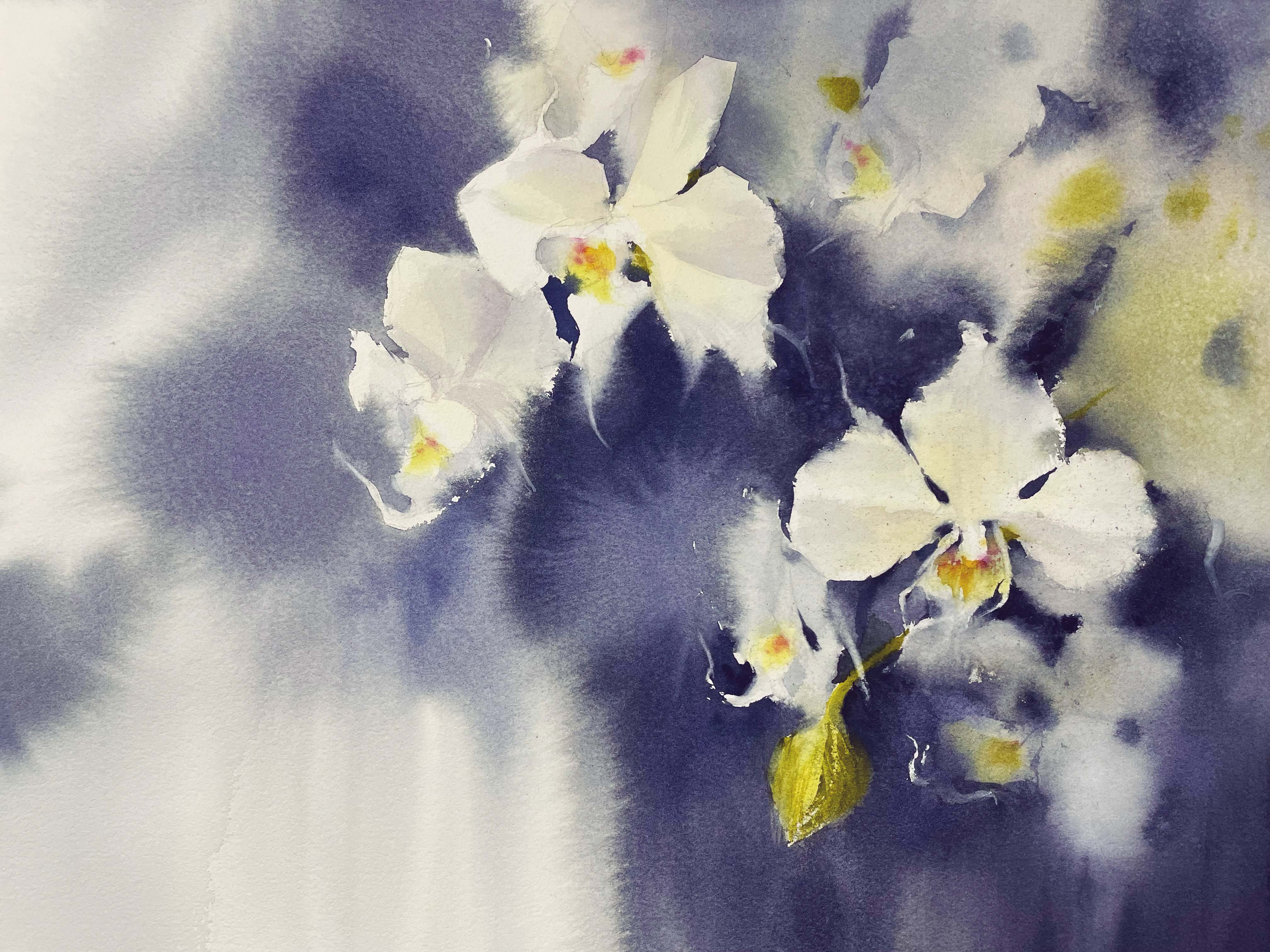
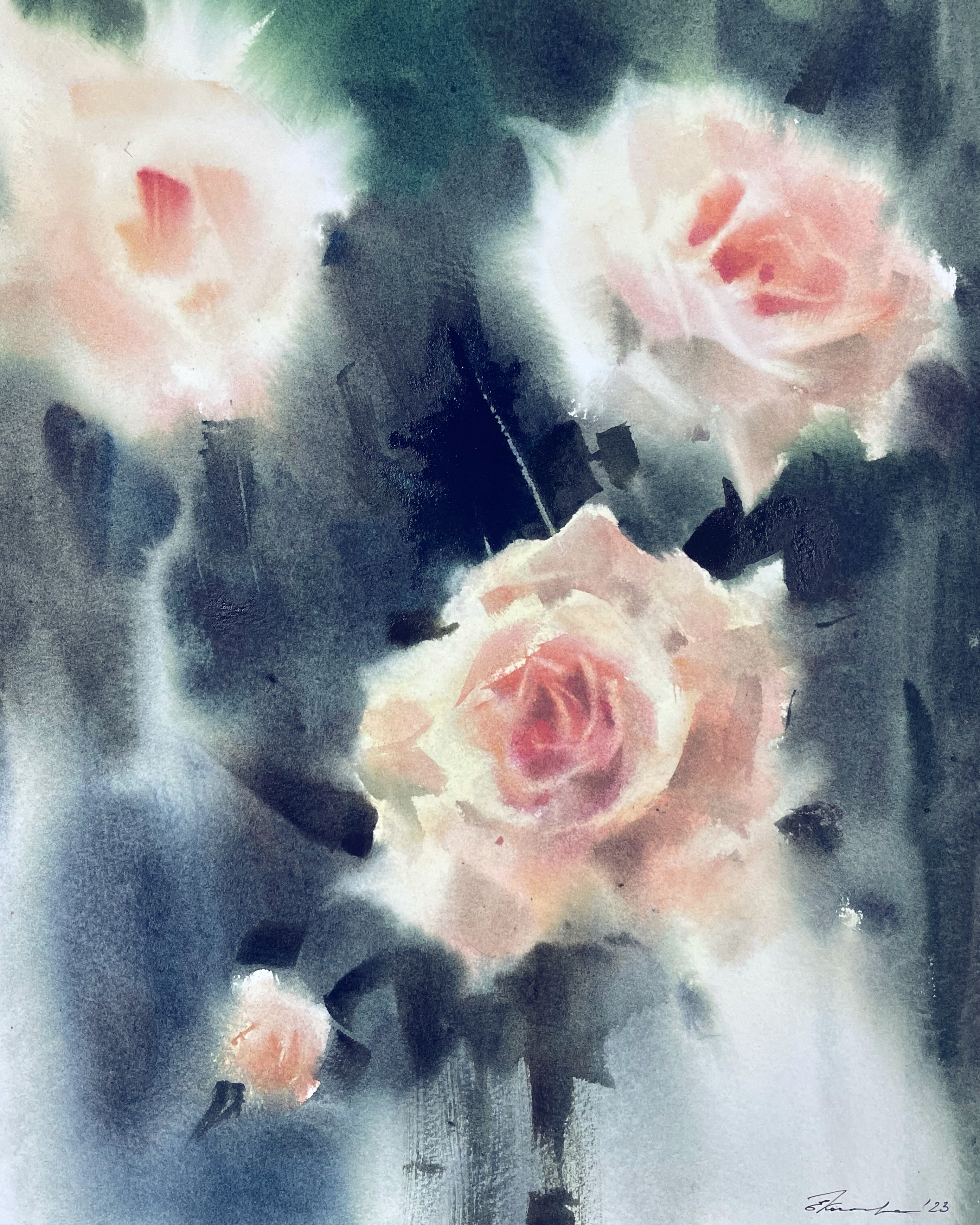
Lesson 4. Fragrance of roses.
Let's study the nature of the flower and the peculiarities of the petals arrangement in preliminary sketches. We will write the final watercolor in the a la prima technique on a wet sheet without a pencil drawing!
You will learn how to:
- connect your imaginative thinking and fantasy while working;
- independently invent a composition and finalize the plot;
- feel the freedom of the watercolor process without a preliminary drawing;
- stop work in time, preserving innuendo and at the same time creating integrity and accuracy of tonal relationships.
An exciting learning experience for those who want to:
🔸 not be afraid to draw flowers
🔸 be able to generalize and identify the main thing, and not copy
🔸 add more freedom to drawing
🔸 learn expressive watercolor technique
What is the online course procedure?
🔸 After payment, you will be enrolled in the course and receive the material
🔸 The duration of access to the lessons will depend on the format of your training - 1, 3 or 6 months
🔸 After opening the video lessons you can watch them at any time convenient for you
What VIP format with feedback from Eugeniya Kostikova includes?
🔸 Unlimited access to video lessons immediately after payment
🔸 Tasks checking
🔸 Full comments on your works from the teacher
🔸 Work on errors
🔸 Teacher recommendations
🔸 Possibility of individual consultation
ARTIST
Eugeniya Kostikova
Hello dear friends!
My name is Evgeniya Kostikova, I am a watercolor artist and teacher of fine arts.
I live and work in Russia, in Tula. Being an architect by education, I've been in love with watercolor since my studies. However, first time I discovered all the diversity of the world of watercolor was only when I got the opportunity to buy professional materials and learn from famous artists.
In my work I experiment with different watercolor techniques, allowing the paint to play freely on the sheet and make adjustments to my idea.
The main source of my inspiration is nature. Approaching the beauty of the world around us, capturing states, conveying on paper the wind, summer midday heat or frosty winter morning, presenting the viewer with my emotions from communicating with nature - this is how I see the main task for myself as for an artist.
Since 2018 I have been actively teaching, painting with children in my studio, conducting a full-time watercolor course for adults, plein-airs and workshops.
At the moment I am a member of the International Watercolor Society, a member of the Union of Professional Artists of Russia, as well as a participant and winner of international watercolor exhibitions and festivals. My works are in private collections in Russia and abroad.

Works by Eugeniya Kostikova
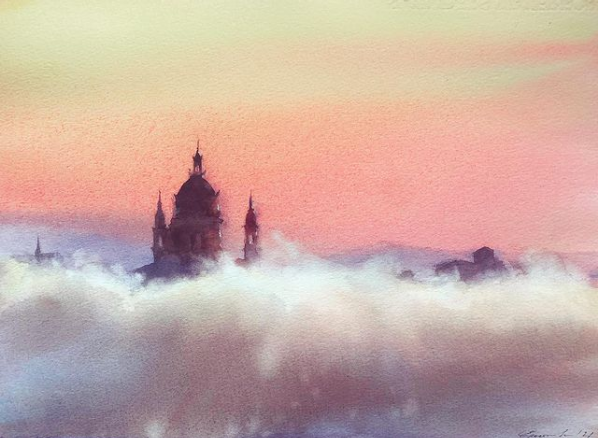
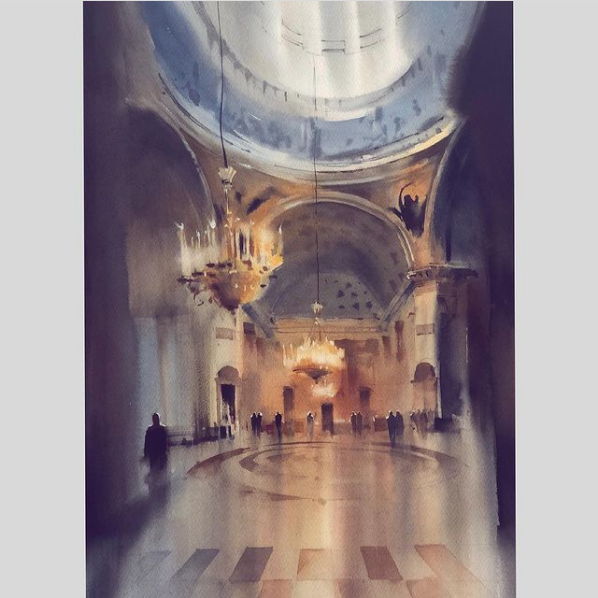

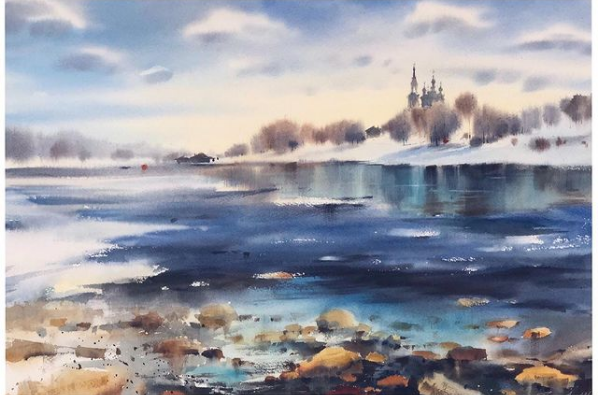

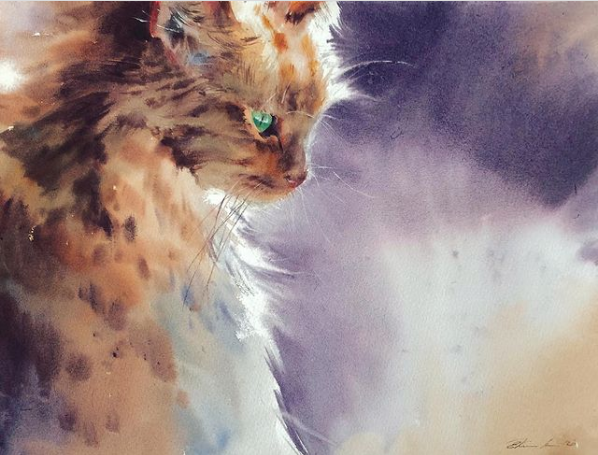
Materials:
Paper:
For work with charcoal you can use ordinary drawing paper, A4 or A3.
Saunders Waterford 100% cotton, 300 g/m2, medium grain, size 28х38 cm (quarter of a sheet and less).
Brushes:
- Fleits from goat (I use Herend brushes)
- Sharped-tipped filling brush (squirrel mix, french mount). The width of pile's bunch about 6 mm. (I use Belka brush)
- Sharped-tipped synthetic brush № 6 and № 2 for subtle details (Roubloff Aqua blue, Escoda Perla)
- Flat brush from chipmunk (Herend), 8 mm, or you can use flat synthetic brush.
Additional materials:
A tablet made of plexiglass or plastic slightly larger than the sheet format, masking tape, a black lead pencil HB, a kneaded eraser, drawing charcoal, album sheets for sketches and paints, paper towels, a palette (you can use a white ceramic plate), two containers with water, a spray bottle, a hair dryer, hairspray, masking liquid (it is better to use Sennelier, without an applicator), a sharpened match for applying masking liquid, small containers made of glass or plastic.
Paints:
Any paint manufacturer.
- light yellow neapolitan (PY 216)
- aureolin (or lemony)
- orange cadmium
- carmine
- opera (or neon pink, pink quinacridone, magenta)
- yellow ocher
- burnt sienna
- olive
- burnt umber
- ultramarine
- blue cobalt
- lavender
- blue indanthrene (or indigo)
- ceruleum
- neutral tint (or payne's grey)
-
Chinese whitewash (or gouache - titanium white)
